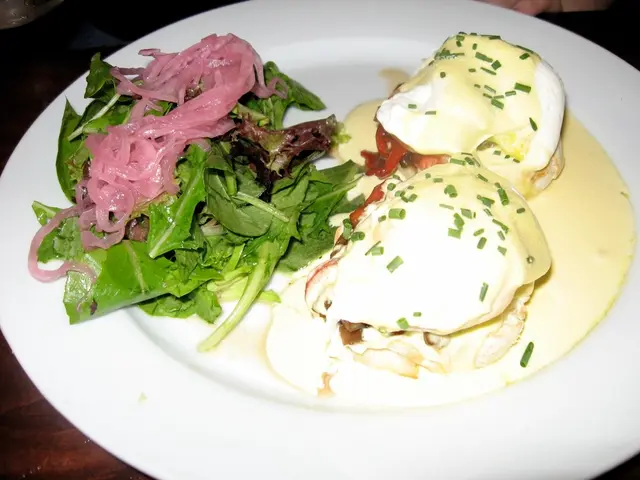Quantity of Ethanol in Kombucha Tea
Brewing Up Kombucha: A Guide to Adjusting Alcohol Content
Have you ever made your own homemade kombucha and wondered about the alcohol content? Here are the deets! Plus, tips for adjusting the level of booze for high or low alcohol kombucha.
Ready to dive in? Skip to the section that catches your interest:
- Why Does Kombucha Contain Alcohol?
- Factors Affecting Alcohol Content
- How to Create Low Alcohol Kombucha
- Creating High Alcohol Kombucha
The Lowdown on Kombucha Alcohol Content
Armed with your *scoby* (symbiotic culture of bacteria and yeast), your homemade kombucha brew will naturally contain a small amount of alcohol. Typically, homemade kombucha packs between 1 to 2.5% alcohol. In comparison, commercial kombucha boasts less than 0.5% alcohol. Due to its low alcohol content, it's classified as a non-alcoholic beverage in many countries.
Yep, We're Making Alcohol
So, how does kombucha end up with alcohol? Well, the bacteria and yeast in your *kombucha scoby* ferment the sugar in sweetened tea. Yeast snacks on the sugar, producing alcohol and carbon dioxide during the process. The bacteria then convert the alcohol into acetic acid, creating that signature tangy kombucha taste.
However, it's difficult to pinpoint the exact alcohol content of each batch without sophisticated, expensive equipment. A regular hydrometer won't do the trick because of the high number of particles in suspension.
The Influencers of Alcohol Content
Wondering how you can manage the alcohol content in your kombucha? Here are the main factors that play a part:
Sugar Content
Since alcohol comes from sugar, the initial amount will dictate the maximum potential alcohol production. More sugar means more potential for alcohol production, but remember, there's a limit to how much sugar can be fermented.
Yeast Presence
The type, quality, and quantity of yeast in your kombucha culture (aka your starter) impact the alcohol content in your final brew. More yeast equals a higher alcohol content, but there are numerous types with varying characteristics. Keep in mind that kombucha is a wild fermentation, so the actual yeast mixture can vary.
Temperature
Yeast is most active at warm temperatures and will produce more alcohol as a result. The bacteria in kombucha, on the other hand, prefer cooler temperatures. By manipulating the temperature, you can control the alcohol and acidity levels of your kombucha.
Fermentation Time
During the early stages of fermentation, yeast multiply rapidly, producing a lot of alcohol and carbon dioxide. Once the initial phase ends, fermentation slows down, and the amount of alcohol produced by the yeast decreases. Lengthier fermentation periods result in a lesser alcohol content.
Air Exposure
Acetic bacteria require oxygen to convert the alcohol in kombucha into acetic acid. Greater air exposure means faster conversion of alcohol to acetic acid, ultimately resulting in lower alcohol content.
Low Alcohol Kombucha Brewing Tips
Ready to brew a kombucha with minimal booze? Here are a few tips:
- Limit sugar to 50g (1⁄4 cup) per liter
- Maintain fermentation temperature between 20 to 28°C
- Extend fermentation time from 10 to 15 days
- Avoid sweet ingredients during flavoring
- Reduce fermentation time in the bottle before refrigeration
Taking the Alcohol Content Up a Notch
Want a brew with a bit more zing? Here's what you can do:
- Increase sugar level to 100g (1⁄2 cup) per liter
- Set fermentation temperature between 28 to 35°C
- Reduce fermentation time from 7 to 10 days
- Add sweet ingredients during flavoring
- Maintain bottles at 25 to 35°C before refrigeration
Get the Gear You Need
For a smooth kombucha brewing experience, consider these products:
- Glass fermenting vessels
- Airlocks
- Filters
- Wide-mouthed bottles for second fermentation
- *Scoby* cultures
Getting started with kombucha brewing? Check out:
- Basic kombucha recipe
- Equipment for kombucha brewing
- Tips for sugar-free kombucha
- All kombucha recipes
- When and how much kombucha to drink per day.
[1] Jung, Y. H., Suh, H. Y., & Park, S. Y. (2015). Kombucha Fermentation: A Review of Probiotics, Antioxidants, and Inhibitory Components. Journal of Functional Foods, 19, 1321-1336. Link[2] Liu, T. Y., Lin, K. S., Liu, H. C., & Wu, W. J. (2018). Antioxidant Activity of Kombucha. BioMed Research International, 2018, 8127609. Link[3] Zheng, Y., & Zhang, Y. (2020). Review of the Health Benefits of Kombucha Tea: Preparation, Microbiology, Metabolites, and Potential Probiotic Properties. Beverages, 6(1), 14. Link[4] Zheng, Y., & Zhang, Y. (2019). Rapid Spoilage of Kombucha Tea during Primary Fermentation. Journal of Food Science, 84(6), 1766-1775. Link
- The science of kombucha brewing extends beyond its health benefits; understanding factors like sugar content, yeast presence, temperature, fermentation time, and air exposure can influence the alcohol content.
- To incorporate kombucha into a balanced health-and-wellness and lifestyle routine, it's essential to strike a balance between maintaining a low alcohol content and preserving the tangy flavor - this can be achieved through practices such as limiting sugar, extending fermentation time, and reducing air exposure.
- Cooking and food-and-drink enthusiasts might find the process of adjusting alcohol content in kombucha fascinating, as it provides an opportunity to customize the beverage's potency based on personal preferences, entertaining scenarios, or dietary requirements.








